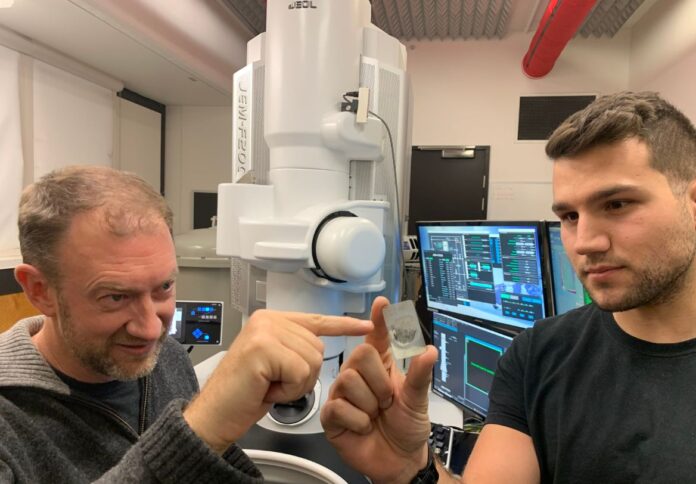
A group of researchers from Monash University, RMIT University, CSIRO, the Australian Synchrotron, and Plymouth University has discovered a new form of diamond found in meteorites that came from an ancient dwarf planet, which could help revolutionise industrial diamond manufacturing.
In a statement released Tuesday, Monash University said the discovery confirms the existence of a nano-sized diamond called Ionsdaleite.
Researchers found the rare hexagonal material preserved in ureilite meteorites, a rare type of stony material from the insides of a dwarf planet.
The strange diamonds may have formed shortly after the planet collided with a large asteroid about 4.5 billion years ago, according to scientists.
Monash University Professor Andy Tomkins, the lead author of the study, discovered the unusually formed crystallites when looking at ureilite meteorites in his lab.
Tomkins, who is an ARC Future Fellow at Monash’s School of Earth Atmosphere and Environment, said the discovery could help address a long-standing mystery regarding the formation of the carbon phases in ureilites.
“We propose that lonsdaleite in the meteorites formed from a supercritical fluid at high temperature and moderate pressures, almost perfectly preserving the textures of the pre-existing graphite. Later, lonsdaleite was partially replaced by diamond as the environment cooled and the pressure decreased,” Tomkins said.
Industrial diamonds are currently manufactured with chemical vapour deposition, in which diamonds are formed onto a substrate from a gas mix at low pressures.
In the study, scientists leveraged cutting-edge electron microscopy and synchrotron techniques to create maps of Ionsdaleite, diamond, and graphite found in the meteorites.
“Nature has thus provided us with a process to try and replicate in industry. We think that lonsdaleite could be used to make tiny, ultra-hard machine parts if we can develop an industrial process that promotes replacement of pre-shaped graphite parts by lonsdaleite,” Tomkins added.




















